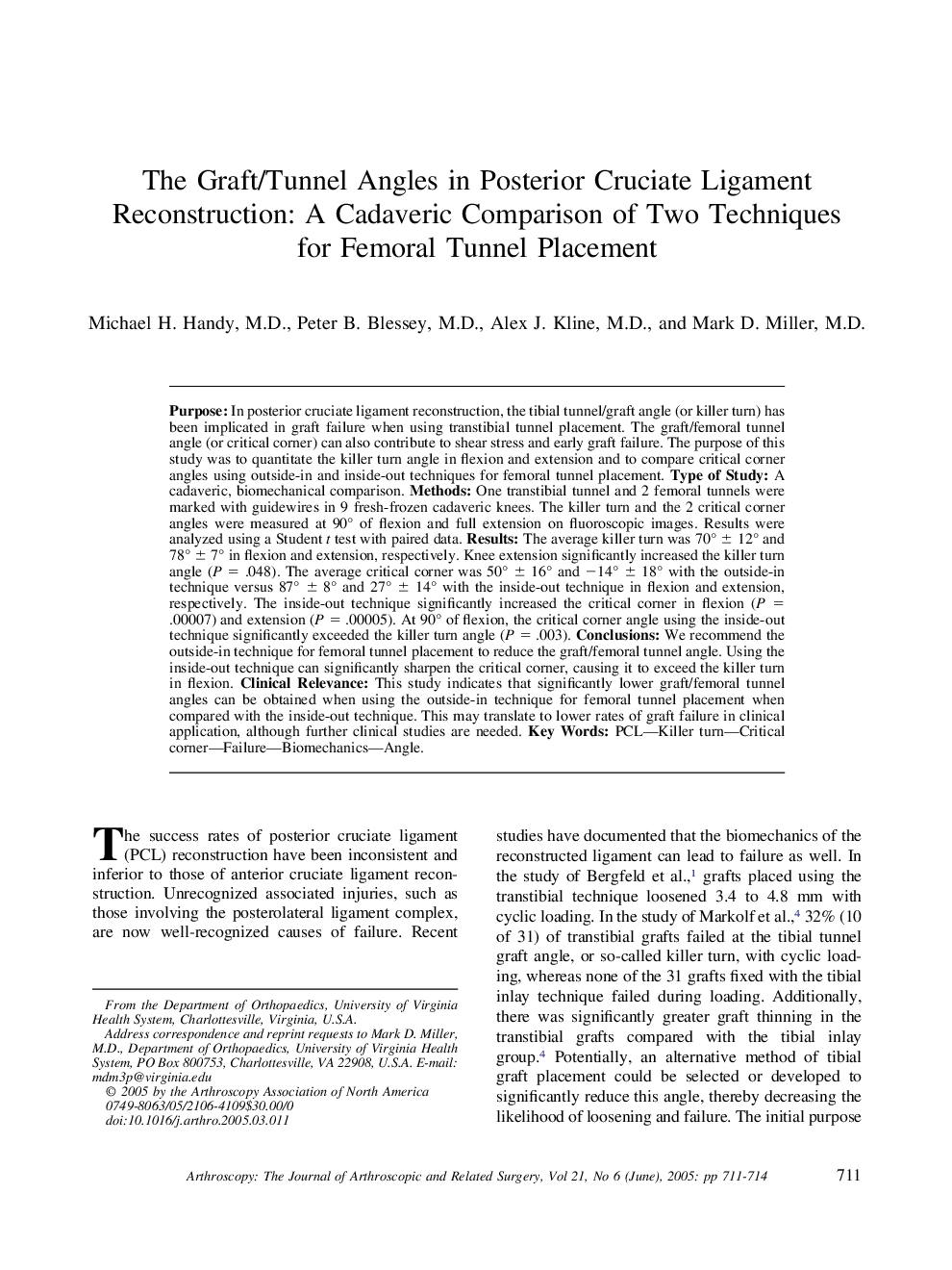| Article ID | Journal | Published Year | Pages | File Type |
|---|---|---|---|---|
| 10078995 | Arthroscopy: The Journal of Arthroscopic & Related Surgery | 2005 | 4 Pages |
Abstract
Purpose: In posterior cruciate ligament reconstruction, the tibial tunnel/graft angle (or killer turn) has been implicated in graft failure when using transtibial tunnel placement. The graft/femoral tunnel angle (or critical corner) can also contribute to shear stress and early graft failure. The purpose of this study was to quantitate the killer turn angle in flexion and extension and to compare critical corner angles using outside-in and inside-out techniques for femoral tunnel placement. Type of Study: A cadaveric, biomechanical comparison. Methods: One transtibial tunnel and 2 femoral tunnels were marked with guidewires in 9 fresh-frozen cadaveric knees. The killer turn and the 2 critical corner angles were measured at 90° of flexion and full extension on fluoroscopic images. Results were analyzed using a Student t test with paired data. Results: The average killer turn was 70° ± 12° and 78° ± 7° in flexion and extension, respectively. Knee extension significantly increased the killer turn angle (P = .048). The average critical corner was 50° ± 16° and â14° ± 18° with the outside-in technique versus 87° ± 8° and 27° ± 14° with the inside-out technique in flexion and extension, respectively. The inside-out technique significantly increased the critical corner in flexion (P = .00007) and extension (P = .00005). At 90° of flexion, the critical corner angle using the inside-out technique significantly exceeded the killer turn angle (P = .003). Conclusions: We recommend the outside-in technique for femoral tunnel placement to reduce the graft/femoral tunnel angle. Using the inside-out technique can significantly sharpen the critical corner, causing it to exceed the killer turn in flexion. Clinical Relevance: This study indicates that significantly lower graft/femoral tunnel angles can be obtained when using the outside-in technique for femoral tunnel placement when compared with the inside-out technique. This may translate to lower rates of graft failure in clinical application, although further clinical studies are needed.
Keywords
Related Topics
Health Sciences
Medicine and Dentistry
Orthopedics, Sports Medicine and Rehabilitation
Authors
Michael H. M.D., Peter B. M.D., Alex J. M.D., Mark D. M.D.,
